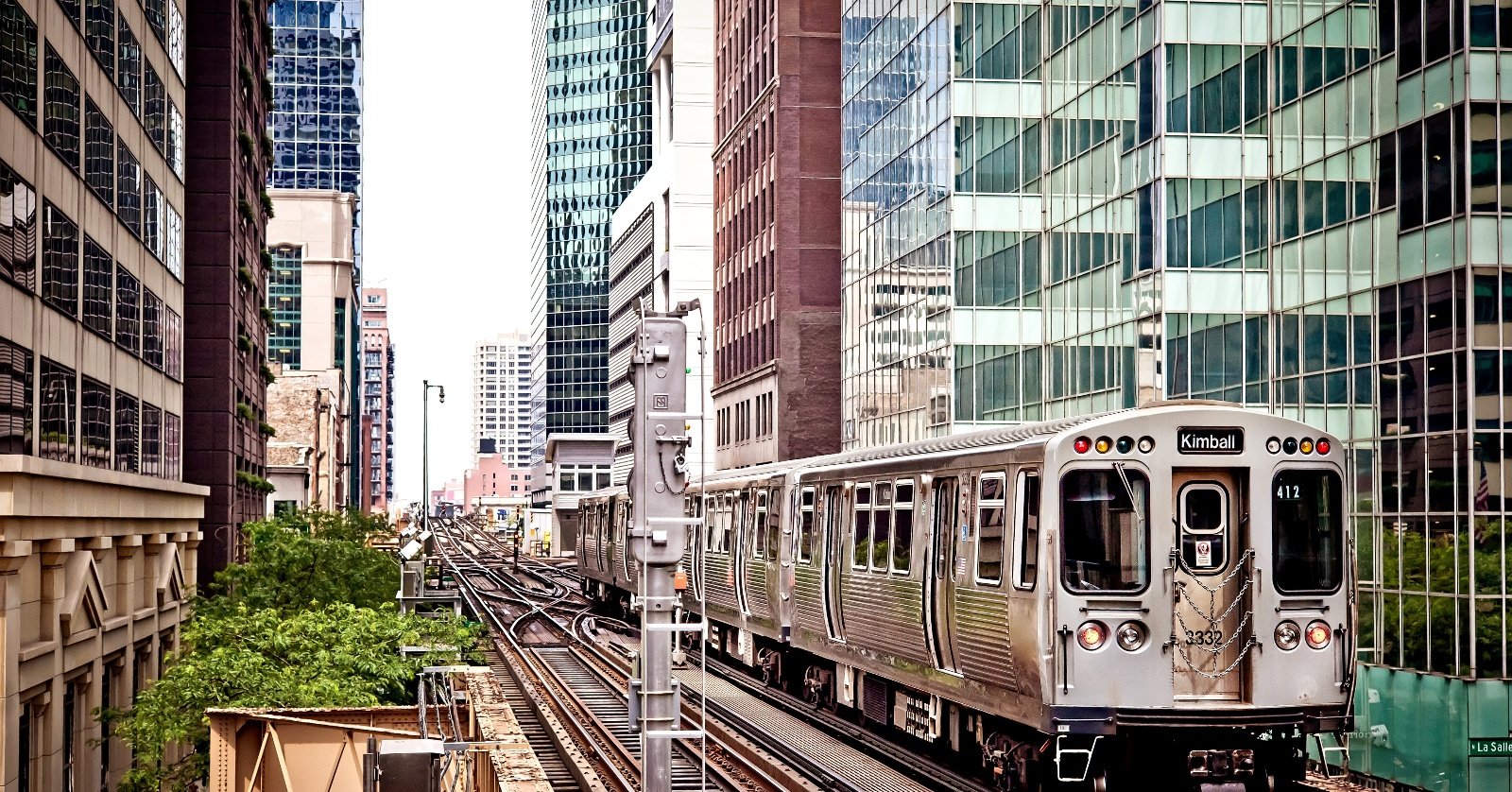A Guide to Commuting to Chicago from the Arlington Heights & Barrington Areas

Many Illinois residents who work in Chicago opt to commute from nearby suburbs like Arlington Heights and Barrington. One of the biggest reasons people choose this commute is that Chicago’s suburbs offer a lower cost of living and a comfortable, residential vibe. In contrast, the city offers plenty of job opportunities, particularly in areas like manufacturing, printing, publishing, insurance, transportation, engineering, sales, financial trading and services, food processing, and more.
Below, we’ve outlined popular routes and transportation options for commuting from Arlington Heights and Barrington to Chicago.
Commuting Options from Barrington, Arlington Heights, and the Nearby Areas
TO CHICAGO BY CAR
The fastest way to commute from Barrington to Chicago is by car on I-90 E. The best times to commute via car include leaving the suburbs around 6:30-7:00 am to avoid traffic and leaving the city between 3:30-4:00 pm or after 7:00 pm to avoid rush hour traffic.
- From Barrington, get on I-90 E in Hoffman Estates from Barrington Road, follow I-90 E and I-94 to W Ohio Street in Chicago, then follow W Ohio Street to N LaSalle Drive and N Clark Street to S Federal Street. Depending on traffic, this route takes approximately 47 minutes one way.
Note: this route has tolls. See all route options here. - You’ll take this same route from Arlington Heights, but you can get to I-90 E in Elk Grove Township from N Arlington Heights Road. Depending on the time of day and traffic, this route takes approximately 38 minutes one way.
Note: this route has tolls. If you want to avoid tolls, you can take the longer commute via I-290 E. See all route options here.
Visit the Illinois Tollway website for information on routes and fees. Remember that you can always carpool with coworkers on a similar schedule to save on tolls, reduce pollution, and—last but not least—get to know your teammates better.
Pros & Cons of Commuting by Car to Chicago
Pros: There are multiple benefits to commuting by car. The car is usually the fastest mode of transportation, provided you avoid rush hour traffic. It also allows you the comfort and privacy of having your own space to begin and end the day comfortably, listening to music, podcasts, or just enjoying the silence. Beyond this, cars also generally get you closer to your destination.
Cons: Commuting by car also comes with a cost. You’ll need to calculate expenditures related to tolls, gas, parking, car insurance, and upkeep, and, of course, the cost of the car itself. Commuting times may also vary depending on traffic, especially during construction, so car commutes can be less predictable than taking public transit. Cars also add more pollution to the environment.
TO CHICAGO BY TRAIN
If you prefer not to own a car or otherwise utilize your commute time to accomplish some work in transit, you can take the train.
- In Barrington, you’ll start at Metra’s Union Pacific Northwest (UP-NW) and end at Ogilvie Transportation Center. You can find detailed information on schedules, maps, fares, and stations/parking here.
- From Arlington Heights, the Metra connects to this same line but starts at the Arlington station located at 45 W. Northwest Highway. The average commute time from Arlington on this route is 45 minutes.
View more information on the schedule, maps, and fares here.
Pros & Cons of Commuting to Chicago by Train
Pros: Taking the train allows you to reduce costs related to car travel. It also allows you to work during your commute for higher productivity, possibly enabling you to cut some of your in-office time. Of course, public transit is also better for the environment.
Cons: You won’t have as much privacy when you take the train, and you may still need to own a car so that you can get to the train station. The commute will also be a little longer by train, and you may not be dropped off as close to your destination as you would like.
TO CHICAGO BY BUS
While you can also commute by bus from Barrington and Arlington Heights to Chicago, few people utilize this option since the routes are much longer and frequently impractical. From Barrington, the commute takes approximately 3 hours and involves several bus changes. The commute From Arlington Heights takes approximately 1 hour to 1.5 hours and involves changes.
Pros & Cons to Commuting to Chicago by Bus
Pros: While the length of the commute makes it much harder to think of pros for taking the bus, keep in mind that the bus may be a good option for you within the city itself to get closer to your work destination, particularly if you commute with a heavy briefcase or other cumbersome equipment. Don’t rule out a hybrid commuting approach.
Cons: Of course, the biggest con of taking the bus is the length of the commute itself, as well as the many bus changes involved. Because of these many stops, it’s also harder to work on your commute when you take the bus.
Work From Home Near Chicago
While some industries and companies require your physical presence at a central office, more and more companies are switching to a work-from-home model. If working remotely is possible for you, you may enjoy having that extra time in your schedule and saving money (and the environment) by not commuting at all!
With working from home becoming more prevalent, you may be interested in remodeling a certain room as you will be seeing it more often or even working in an office room. Creating a nice work environment from home can make work much more enjoyable, keep you working productively, and potentially increase your home value!
Are you interested in building a home office? Download the eBook "The Ultimate Step-by-Step Home Renovation Transformation Guide" to learn how to start planning a home renovation project.

